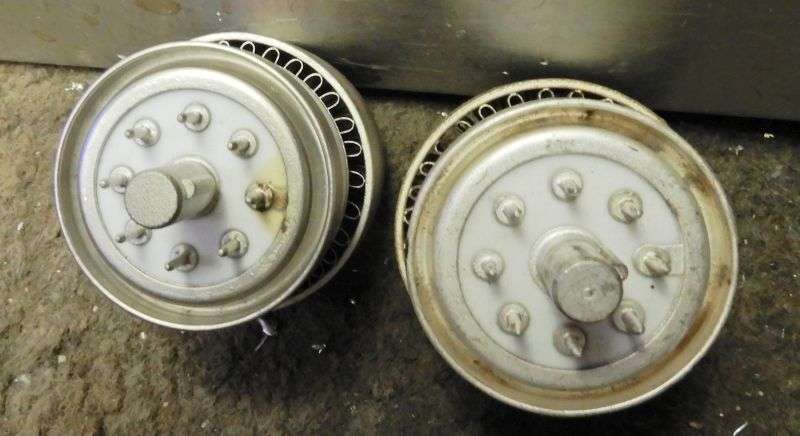Ebay. You pays your money and you takes your chance.
The listing said "no way to test".
The 4CX250B tube on the left has a problem we call the "blown fuse". Note that pin 1 of the tube on the right has a thin strip of vacuum-deposited metal that connects the pin to the metal ring around the base. This connects that ring to the tube's screen grid. A special ring-shaped capacitor is built into sockets for this tube. Using the ring for this connection reduces the inductance of the circuit path. A big deal at 150 or 250 MHz.

But this link has been popped from the tube on the left. Most-common cause we have seen is leaving off the tube's parasitic-suppression choke. The wattmeter tends to show just a bit more power without it. But the tube will oscillate and produce voltages high enough to arc from the plate to the screen grid. The surge current from the arc will vaporize the thin metal layer and leave this "blown fuse" spot where the metal had been.
And yeah, this tube was toast. Just one more thing to keep your eye peeled for if you consider buying one of this type tube used.
We don't see this as much as we used to, when there were nearby builders using this tube. An easy check to make before risking your amplifier plugging in a "mystery" tube. At least this customer had the sense to have the tube checked before rolling the dice.
73
The listing said "no way to test".
The 4CX250B tube on the left has a problem we call the "blown fuse". Note that pin 1 of the tube on the right has a thin strip of vacuum-deposited metal that connects the pin to the metal ring around the base. This connects that ring to the tube's screen grid. A special ring-shaped capacitor is built into sockets for this tube. Using the ring for this connection reduces the inductance of the circuit path. A big deal at 150 or 250 MHz.

But this link has been popped from the tube on the left. Most-common cause we have seen is leaving off the tube's parasitic-suppression choke. The wattmeter tends to show just a bit more power without it. But the tube will oscillate and produce voltages high enough to arc from the plate to the screen grid. The surge current from the arc will vaporize the thin metal layer and leave this "blown fuse" spot where the metal had been.
And yeah, this tube was toast. Just one more thing to keep your eye peeled for if you consider buying one of this type tube used.
We don't see this as much as we used to, when there were nearby builders using this tube. An easy check to make before risking your amplifier plugging in a "mystery" tube. At least this customer had the sense to have the tube checked before rolling the dice.
73
